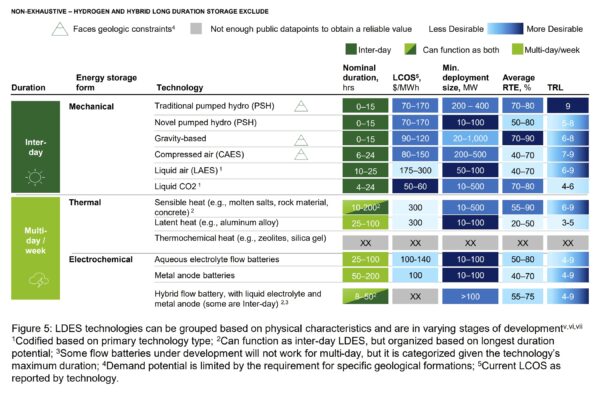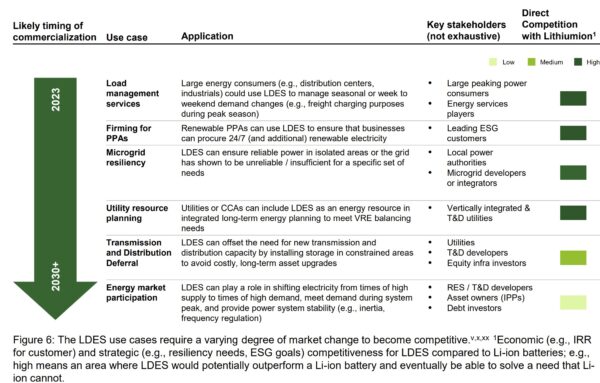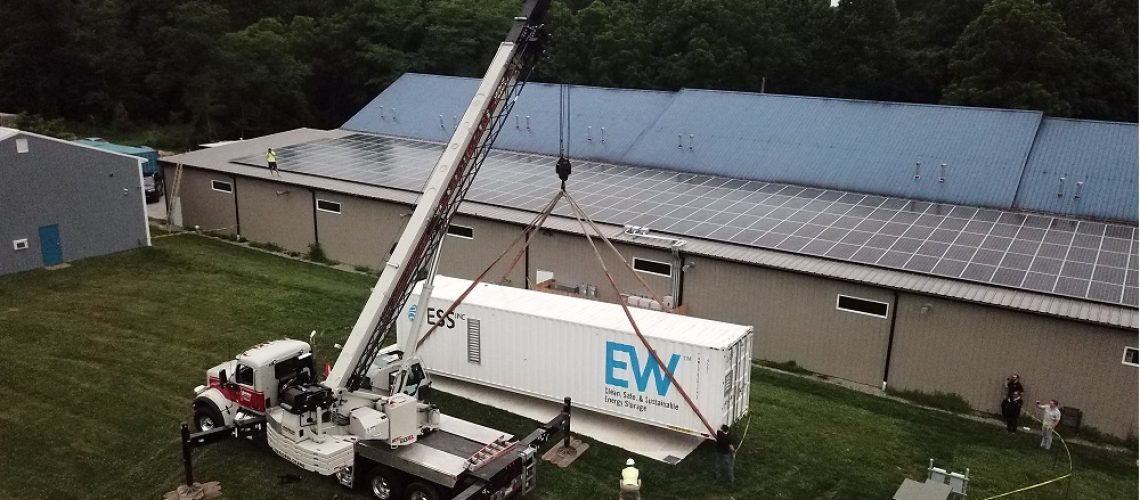The U.S. DOE has published a report outlining the requirements for LDES to achieve technical and financial self-sustainability by the end of decade. An estimated $6 billion to $9 billion dollars in capital investment would be necessary, potentially leading to 6 GW to 10 GW of project deployments.
The Department of Energy (DOE) released a report titled, “Pathways to Commercial Liftoff: Long Duration Energy Storage” (LDES). The report analyzes prerequisites for two forms of LDES systems to transition from their nascent, research-based status to a more robust position, attracting up to $530 billion in cumulative investment and significantly influencing the firmness and cleanliness of the power grid by 2050.
DOE states that maintaining this trajectory will require the deployment of six to 10 GW of LDES projects and the allocation of $6 billion to $9 billion in capital investment by 2030. To align with the 2050 goals, it will need to establish a manufacturing capacity of 10 to 15 GW and roll out further deployments by 2035.
The specified objectives for 2050 include the deployment of 225 GW to 460 GW of LDES capacity, which is projected to save $10 billion to $20 billion annually, compared to scenarios without such deployment.
The report explores two specific types of long-duration storage. Inter-day LDES, one of the types, facilitates power shifts spanning 10 to 36 hours, primarily via mechanical batteries such as pumped hydro, gravity-based storage, compressed air, liquid air, and liquid CO2 technologies. The second category, multi-day/week batteries, shifts power over periods extending from 36 to more than 160 hours. Noteworthy multi-day thermal and electrochemical batteries include various heat products, flow, and metal anode products.
In order to meet pricing goals that DOE believes are necessary for market adoption of these products, DOE emphasizes that technology cost curves must decrease by 45% to 55% by 2030. A corresponding improvement in round-trip project performance is also anticipated.

The report projects that by 2030, inter-day LDES project costs must decrease “from $1,100 to $1,400 per kW to $650 per kW and improve round-trip efficiency from the 69% seen in best-in-class technologies in 2022, to ~75%.” Multi-day products must improve performance “from $1,900 to $2,500 per kW and 45% round trip efficiency today – to $1,100 per kW and 55% to 60% round trip efficiency by 2030.”
DOE projects that these advancements in pricing and technology are necessary for driving sales for these products. DOE currently identifies load management, PPA firming, and microgrid resilience as potentially viable use cases.
ESS has deployed its six to 12 hour energy storage product into a resilience-focused data center microgrid in Pennsylvania.
As 2030 approaches, the LDES products should integrate into utility resource planning, transmission and distribution deferral, and broader energy market participation.

LDES products provide benefits that the current market doesn’t yet fully compensate for. A key potential revenue source could be a predictable resource adequacy financial benefit. DOE posits that around $50 to $75 per kW could directly support LDES investment.
Attaining the 260 GW to 440 GW deployment goal, which corresponds to many tens of terawatt-hours of product (although not explicitly stated in the document), could necessitate 1.5 million to 2.1 million direct jobs years in engineering and construction.



